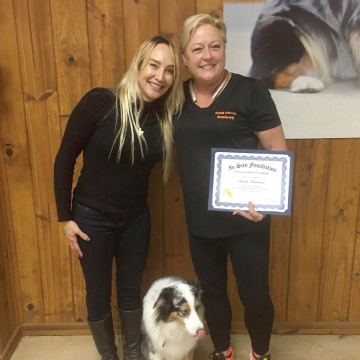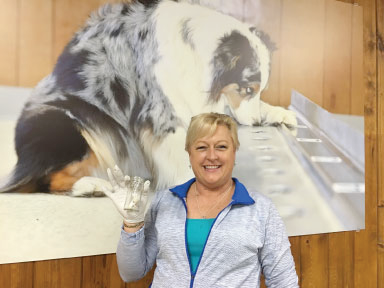Comfort Dogs
A dogs sense of smell is 300,000 times more acute than ours. You and I smell chocolate cake, but a dog smells flour, sugar, eggs etc. Dogs noses have the ability to layer scent. Because of this amazing ability to smell, studies are showing dogs can detect cancer earlier and more accurately than any machine in existence. Medical scent detection dogs will transform medicine through early detection of cancer.
What is a Bio-Dog? A Bio-Dog is a dog who is scientifically and systematically trained to detect any biological substance, particularly dogs who are trained to detect human diseases, such as cancer.
How is a Bio Dog Trained? It takes anywhere between 6 to 8 months and over 300 samples to train and certify a cancer detection dog. All of the dogs are trained on cancer samples, healthy control samples, and disease control samples. They also must be friendly and social, since they will work with people. Dogs do not sniff an actual person, they sniff samples such as breath, plasma, urine and sputum (saliva). They are presented with a known cancer sample for training, and are rewarded for being able to determine the cancer sample from the healthy samples. Over time, the odor of “cancer” is generalized, which is of extreme importance when training a medical scent detection dog. A very large number of samples are used, and we never re-use a sample for training or testing our dogs accuracy levels. All accuracy levels were attained by doing “double-blinded” trials, where brand new samples are numbered, and the dog is able to find all of the new, different cancer samples among brand new healthy controls and disease controls. This way, we can be sure the dog has “generalized” the “cancer odor”, and is not merely memorizing samples.
HERE ARE THE FACTS from the National Cancer Institute (NCI)
• No tumor marker identified to date is sufficiently sensitive or specific to be used on its own to screen for cancer
• Of all breast cancers detected by screening mammograms, up to 54% are estimated to be results of over diagnosis (false positive).
• 50% of women screened annually for 10 years in the United States will experience a false positive, or whom 7% to 17% will have biopsies.
• Up to 46% with invasive cancer will have negative mammograms, especially if they are young, have dense breast, [13,14] or have mucinous, lobular or rapidly growing cancers. – this means that if you have the really bad, fast growing cancer, it’s 46% likely to be missed altogether by a mammogram.
• Annual mammograms in woman aged 40-80 years may cause up to one breast cancer per 1,000 women” – so mammograms are actually causing some cancers.
• The Prostate Cancer Prevention Trial, which biopsied men with normal PSA levels, estimated a negative predictive value of 85% for a PSA value. – In English, the PSA test gives around 85% false positives.
• Dogs have shown in hundreds of published studies and in published medical journals, to be consistently accurate in both sensitivity and specificity at detecting prostate, breast, ovarian, colorectal, melanoma, lung and many other types of cancers.
In other words, dogs ARE detecting cancer at 98-100% with no false positives.


